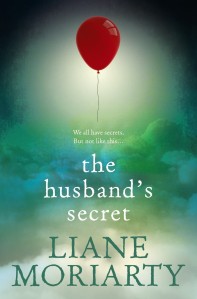 ‘Home Truths’ is Mandy Nolan’s third comedic memoir, following hot on the heels of ‘Boyfriends We’ve All Had (But Shouldn’t Have)’ and ‘What I Would Do If I Were You.’ In ‘Home Truths’ she turns her shrewd gaze to all things domestic. And as it turns out, the home is a very funny place.
‘Home Truths’ is Mandy Nolan’s third comedic memoir, following hot on the heels of ‘Boyfriends We’ve All Had (But Shouldn’t Have)’ and ‘What I Would Do If I Were You.’ In ‘Home Truths’ she turns her shrewd gaze to all things domestic. And as it turns out, the home is a very funny place.
As a child, Mandy used to wander the streets at night, looking into other people’s windows. She enjoyed the surreptitious peek into their private world. This book is an extension of that early fascination, asking the question – who are we when we close the door?
Mandy introduces us to her childhood, in a small town near Kingaroy, which was of course Joh Bjelke-Petersen heartland at the time. Here in Wondai, she develops a syndrome that stays with her – Fear of Missing Out on Living Somewhere Better.
Leaving Wondai for university, she hooks up with a wild bunch of girls in a share house in Brisbane. This quickly becomes a squalid mess, with a special feature ‘poo corner.’ The girls are too lazy to train their cats to use the kitty litter. This hideous living experience is the harbinger of Mandy’s later self-confessed cleaning fetish.
Moving up in the world, we venture into the stressful territory of home building. Here Mandy meets the ‘coping guy’ who she imagines as, ‘some sort of super dude who can handle demanding, difficult and obstreperous women like me. I’m up for the challenge…’
Via homelessness and living alone we land in the fashion-challenged life of the ‘at home worker.’ Popping down for a coffee in a pair of black pyjamas Mandy is told that she looks ‘very corporate.’ It’s easy to let standards slip in a town like Mullumbimby.
Mandy delves deep into the psyche of the home – the psychology of missing socks, the optimum number of decorating cushions and the difficult art of Feng Shui. ‘Why change your behaviour when all you have to do is move the bed?’ Boarding up her daughter’s room seems the best solution to a tricky Feng Shui problem in her house.
Full of laugh out loud and uncomfortably honest moments, ‘Home Truths’ is an incisive and exuberant examination at our homemaking instincts.
This review first apppeared in the Northern Rivers Echo.
Mandy is launching ‘Home Truths’ in Lismore on May 14. Tickets from the Book Warehouse on 66214204.
I will be on a panel with Mandy Nolan at Bellingen Writers Festival on June 7.
This is my second review for the 2015 Australian Women Writers Challenge.







